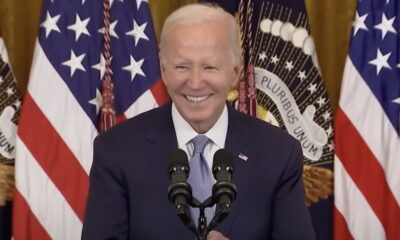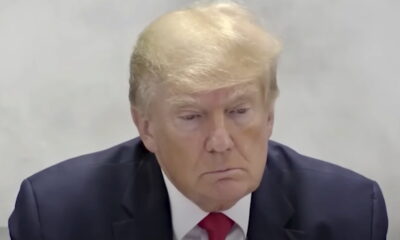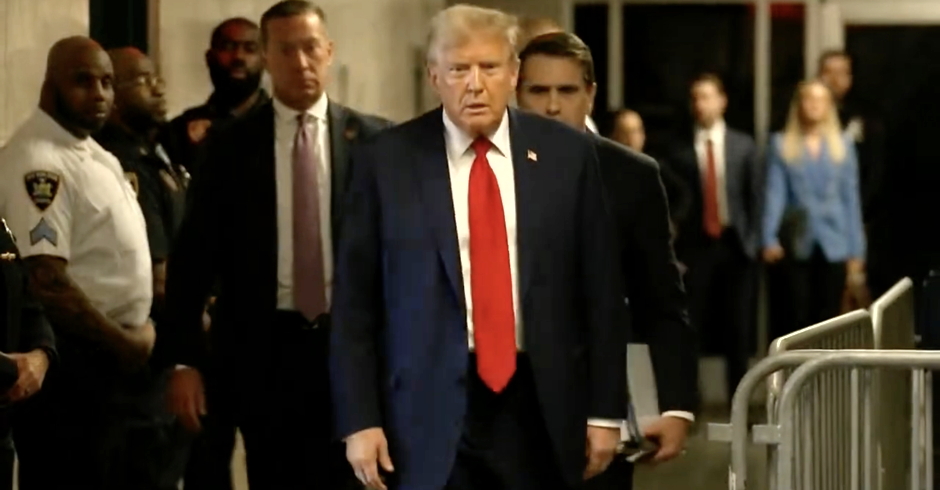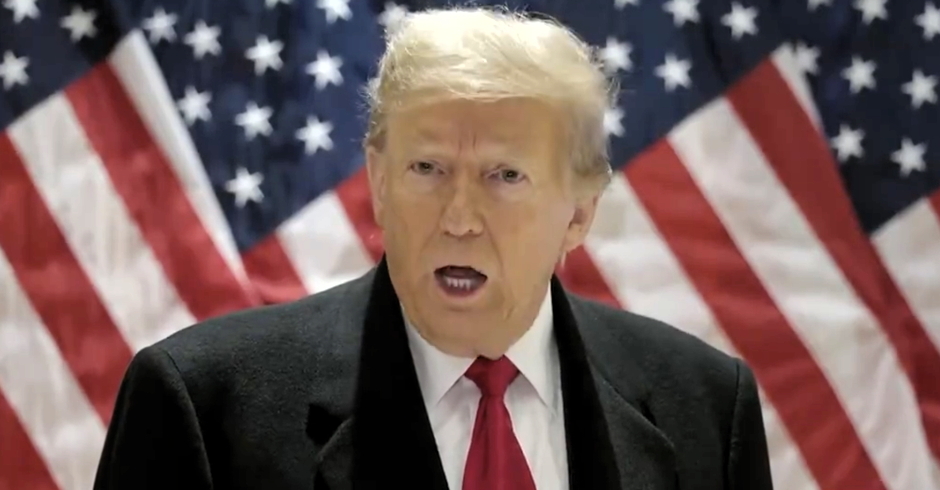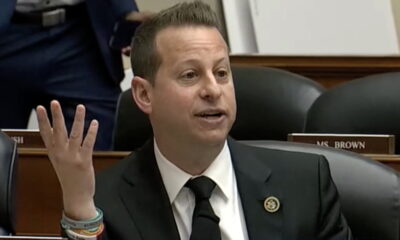News
Internal Emails Reveal High-Ranking Trump Administration Officials Were Warned About Lack of PPE Safety Gear Early On
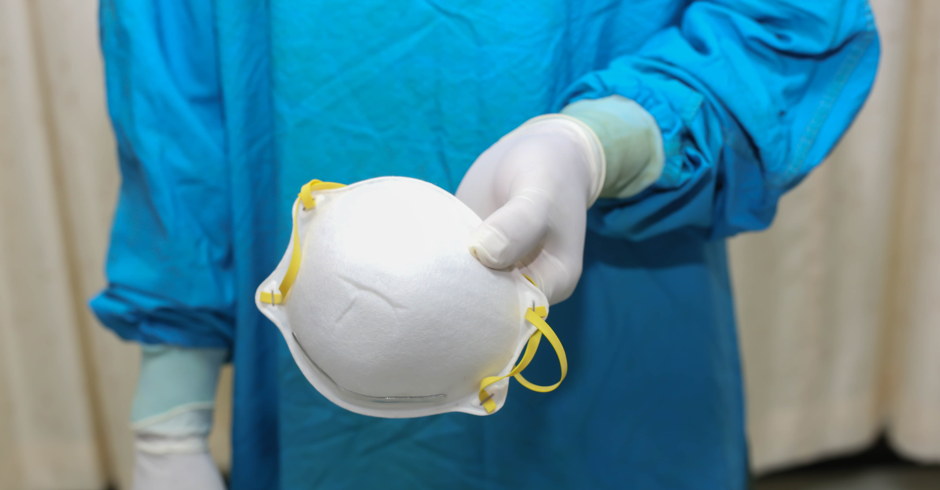
A high-ranking federal official in late February warned that the United States needed to plan for not having enough personal protective equipment for medical workers as they began to battle the novel coronavirus, according to internal emails obtained by Kaiser Health News.
The messages provide a sharp contrast to President Donald Trump’s statements at the time that the threat the coronavirus posed to the American public remained “very low.” In fact, concerns were already mounting, the emails show, that medical workers and first responders would not have enough masks, gloves, face shields and other supplies, known as PPE, to protect themselves against infection when treating COVID-19 patients.
The emails, part of a lengthy chain titled “Red Dawn Breaking Bad,” includes senior officials across the Department of Veterans Affairs, the State Department, the Department of Homeland Security and the Department of Health and Human Services, as well as outside academics and some state health officials. KHN obtained the correspondence through a public records request in King County, Washington, where officials struggled as the virus set upon a nursing home in the Seattle area, eventually killing 37 people. It was the scene of the first major outbreak in the nation.
“We should plan assuming we won’t have enough PPE — so need to change the battlefield and how we envision or even define the front lines,” Dr. Carter Mecher, a physician and senior medical adviser at the Department of Veterans Affairs, wrote on Feb. 25. It would be weeks before front-line health workers would take to social media with the hashtag #GetMePPE and before health systems would appeal to the public to donate protective gear.
In the email, Mecher said confirmed-positive patients should be categorized under two groups with different care models for each: those with mild symptoms should be encouraged to stay home under self-isolation, while more serious patients should go to hospital emergency rooms.
“The demand is rising and there is no guarantee that we can continue with the supply since the supply-chain has been disrupted,” Eva Lee, director of the Center for Operations Research in Medicine and HealthCare at Georgia Tech and a former health scientist at the Atlanta VA Medical Center, wrote that same day citing shortages of personal protective equipment and medical supplies. “I do not know if we have enough resources to protect all frontline providers.”
Reached on Saturday, Lee said she isn’t sure who saw the message trail but “what I want is that we take action because at the end of the day we need to save patients and health care workers.”
Mecher, also reached Saturday, said the emails were an “an informal group of us who have known each other for years exchanging information.” He said concerns aired at the time on medical protective gear were top of mind for most people in health care. More than 35 people were on the email chain, many of them high-ranking government officials.
The same day Mecher and others raised the concern in the messages, Trump made remarks to a business roundtable group in New Delhi, India.
“We think we’re in very good shape in the United States,” he said, noting that the U.S. closed the borders to some areas. “Let’s just say we’re fortunate so far. And we think it’s going to remain that way.”
The White House declined to comment. In a statement, VA press secretary Christina Mandreucci said, “All VA facilities are equipped with essential items and supplies to handle additional coronavirus cases, and the department is continually monitoring the status of those items to ensure a robust supply chain.”
Doctors and other front-line medical workers in the weeks since have escalated concerns about shortages of medical gear, voicing alarm about the need to protect themselves, their families and patients against COVID-19, which as of Saturday evening had sickened more than 121,000 in the United States and killed at least 2,000.
As Mecher and others sent emails about growing PPE concerns, HHS Secretary Alex Azar testified to lawmakers that the U.S. had 30 million N95 respirator masks stockpiled but needed 300 million to combat the outbreak. Some senior U.S. government officials were also warning the public to not buy masks for themselves to conserve the supply for health care providers.
U.S. Surgeon General Jerome Adams tweeted on Feb. 29: “Seriously people – STOP BUYING MASKS! They are NOT effective in preventing general public from catching #Coronavirus, but if healthcare providers can’t get them to care for sick patients, it puts them and our communities at risk!”
Still, on Feb. 27, the FDA in a statement said that officials were not aware of widespread shortages of equipment.
“We are aware of reports from CDC and other U.S. partners of increased ordering of a range of human medical products through distributors as some healthcare facilities in the U.S. are preparing for potential needs if the outbreak becomes severe,” the agency said.
Simultaneously, Trump downplayed the risk of the novel coronavirus to the American public even though the Centers for Disease Control and Prevention was warning it was only a matter of time before it would spread across the country. On Feb. 29, the CDC also updated its strategies for health workers to optimize supplies of N95 masks.
An HHS spokesperson said Saturday the department has been in “an all-out effort to mobilize America’s capacity” for personal protective equipment and other supplies, including allowing the use of industrial N95 respirators in health care settings and awarding contracts to several private manufacturers to buy roughly 600 million masks over the next 18 months.
“Health care supply chains are private-sector-driven,” the spokesperson said. “The federal role is to support that work, coordinate information across the industry and with state or local agencies if needed during emergencies, and drive manufacturing demand as best we can.”
The emails from King County officials and others in Washington state also show growing concern about the exposure of health care workers to the virus, as well as a view into local officials’ attempts to get help from the CDC.
In one instance, local medical leaders were alarmed that paramedics and other emergency personnel were possibly exposed after encountering confirmed-positive patients at the Life Care Center of Kirkland, the Seattle-area nursing home where roughly three dozen people have died because of the virus.
“We are having a very serious challenge related to hospital exposures and impact on the health care system,” Dr. Jeff Duchin, the public health officer for Seattle and King County, wrote in a different email to CDC officials March 1. Duchin pleaded for a field team to test exposed health care workers and additional support.
Duchin’s email came hours after a physician at UW Medicine wrote about being “very concerned” about exposed workers at multiple hospitals and their attempts to isolate infected workers.
“I suspect that we will not be able to follow current CDC [recommendations] for exposed HCWs [health care workers] either,” wrote Dr. John Lynch, medical director of employee health for Harborview Medical Center and associate professor of Medicine and Allergy and Infectious Diseases at the University of Washington. “As you migh [sic] imagine, I am very concerned about the hospitals at this point.”
Those concerns have been underscored with an unusual weekend statement from Dr. Patrice Harris, president of the American Medical Association, which represents doctors, calling on Saturday for more coordination of needed medical supplies.
“At this critical moment, a unified effort is urgently needed to identify gaps in the supply of and lack of access to PPE necessary to fight COVID-19,” the statement says. “Physicians stand ready to provide urgent medical care on the front lines in a pandemic crisis. But their need for protective gear is equally urgent and necessary.”
Image via Shutterstock
Enjoy this piece?
… then let us make a small request. The New Civil Rights Movement depends on readers like you to meet our ongoing expenses and continue producing quality progressive journalism. Three Silicon Valley giants consume 70 percent of all online advertising dollars, so we need your help to continue doing what we do.
NCRM is independent. You won’t find mainstream media bias here. From unflinching coverage of religious extremism, to spotlighting efforts to roll back our rights, NCRM continues to speak truth to power. America needs independent voices like NCRM to be sure no one is forgotten.
Every reader contribution, whatever the amount, makes a tremendous difference. Help ensure NCRM remains independent long into the future. Support progressive journalism with a one-time contribution to NCRM, or click here to become a subscriber. Thank you. Click here to donate by check.
 |



